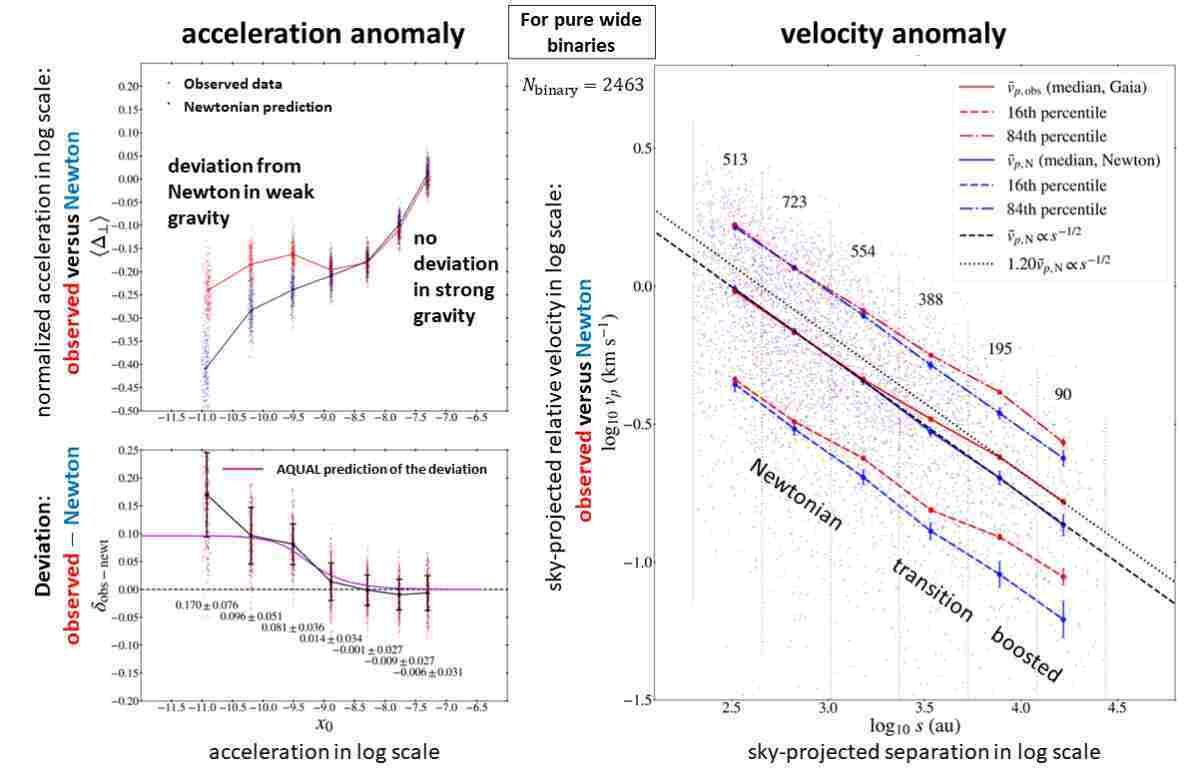ASTRONOMY
South Korean study finds modified gravity in low acceleration situations with wide binary stars

A recent study conducted by Kyu-Hyun Chae, a professor of physics and astronomy at Sejong University in Seoul, South Korea, has reinforced the evidence for modified gravity and its idiosyncratic breakdown at low acceleration. The study analyzed gravitational anomalies that were reported back in 2023 on widely separated or long-period binary stars, known as wide binaries. The data for the study was gathered by the European Space Agency's Gaia space telescope.
The findings of Chae's study hold great promise for theoretical physicists and mathematicians, as the breakdown of standard gravity at low acceleration has significant implications for astrophysics and cosmology. The team's analysis revealed that orbital motions in binaries experience larger accelerations than what is predicted by Newtonian laws in gravitational systems weaker than about 1 nanometer per second squared. The acceleration boost factor increases to about 1.4 at accelerations lower than about 0.1 nanometers per second squared.
The study also found that the observed gravitational anomaly is remarkably consistent with the Modified Newtonian Dynamics (MOND) gravity phenomenology. However, the underlying theoretical possibilities that encompass the MOND gravity phenomenology are open, which may be welcome news to theoretical physicists and mathematicians.
In previous studies, researchers have suggested that the gravitational acceleration of observed objects can only be explained by introducing dark matter. However, a new study has found that the required dark matter density exceeds what has been observed in galactic dynamics and cosmological observations. As a result, this provides further evidence for modified gravity.
The research focused on a sample of "pure" wide binaries, which were selected by removing all systems that could potentially harbor unobserved additional stars. The team selected up to 2,463 pure binaries, which was less than 10% of the sample used in the earlier study, to avoid potential errors in supercomputing hidden additional gravity effects.
The study's two different algorithms to test gravity produced consistent results that agree with previously reported gravitational anomalies. The observed acceleration or relative velocity between two stars naturally satisfies the Newton-Einstein standard gravity at small separation or high acceleration. However, the acceleration or relative velocity deviates from the Newtonian prediction at a separation of about 2,000 AU and an acceleration of about 1 nanometer per second squared. There is then a consistent boost of about 40 to 50% in acceleration or 20% boost in relative velocity at separation greater than about 5,000 AU or acceleration lower than about 0.1 nanometer per second squared up to the probed limit of about 20,000 AU or 0.01 nanometer per second squared.
The research concludes that at least three independent quantitative analyses by two independent groups have revealed essentially the same gravitational anomaly. Therefore, the gravitational anomaly is real, and a new scientific paradigm shift is on its way.
In conclusion, the study provides us with direct evidence that modified gravity at low acceleration is a reality. These findings have implications for theoretical physicists, mathematicians, and everyone involved in the study of our universe.

